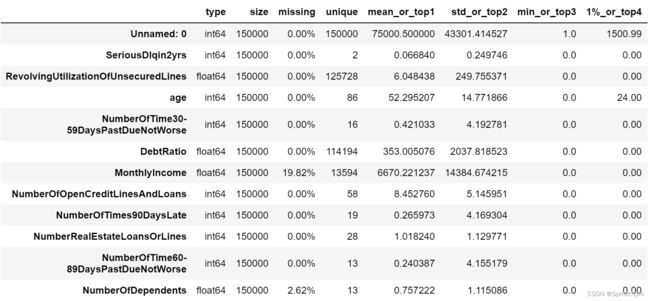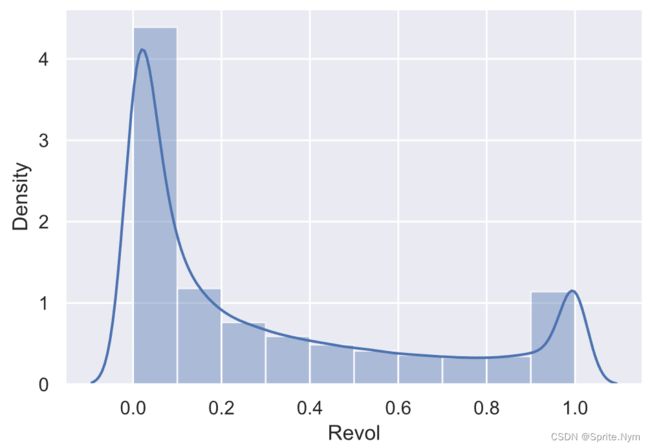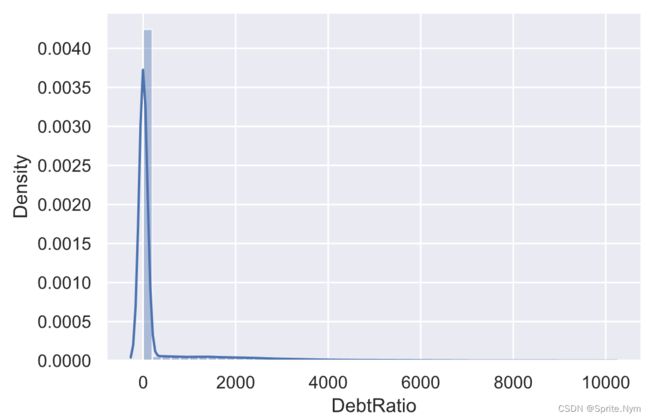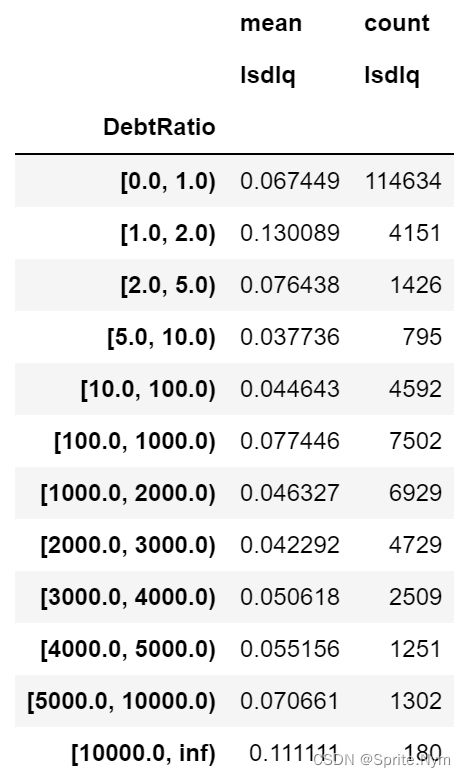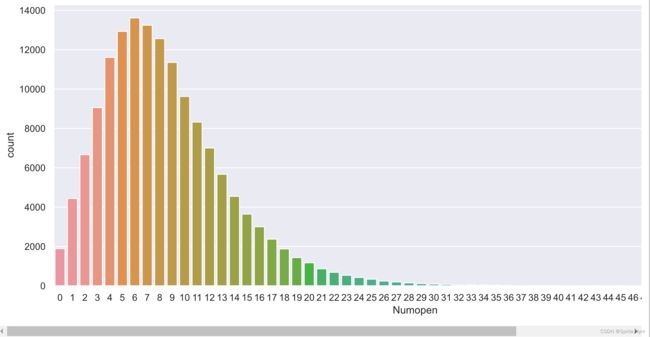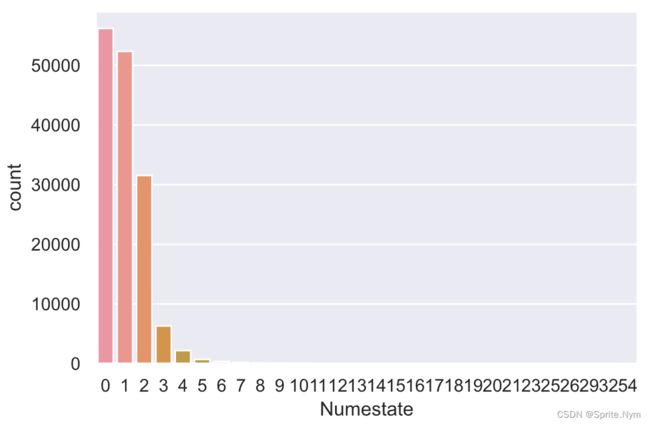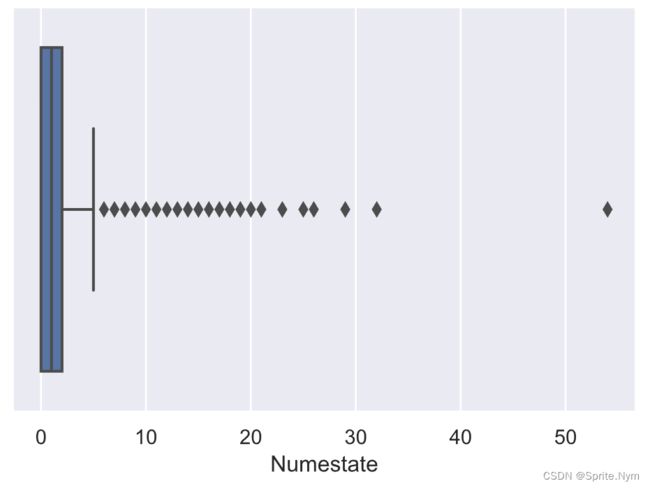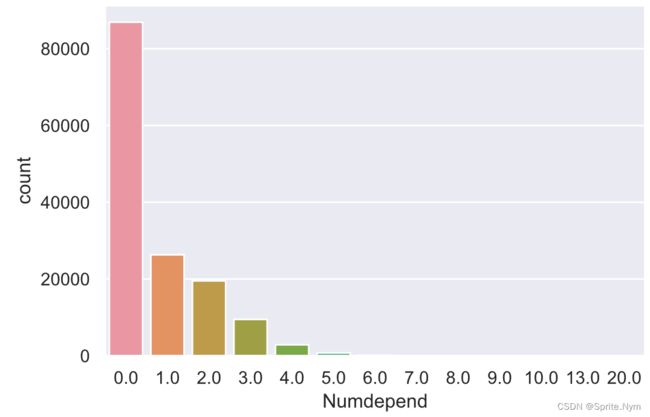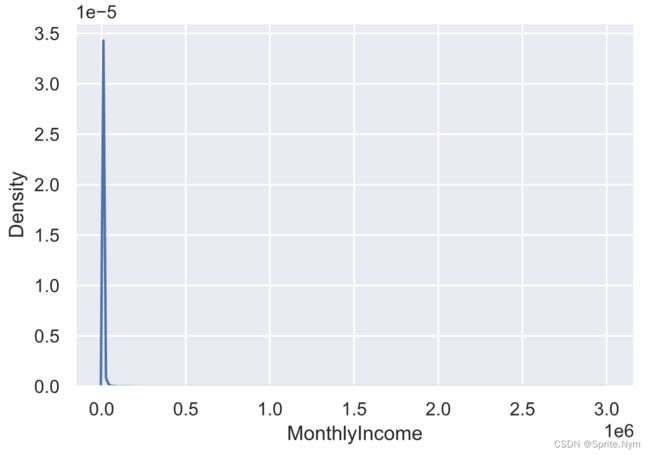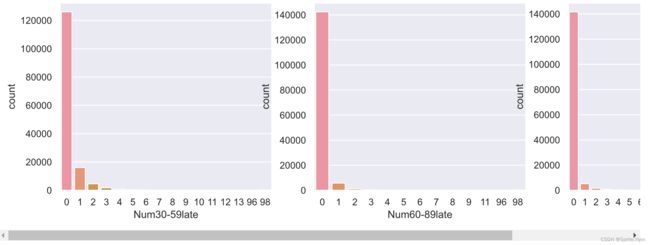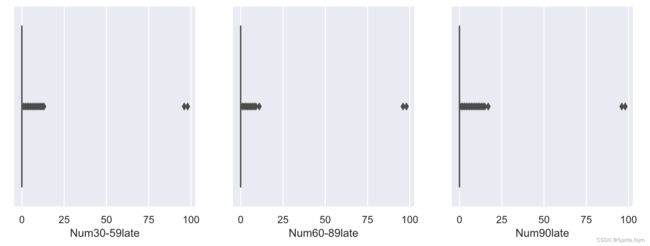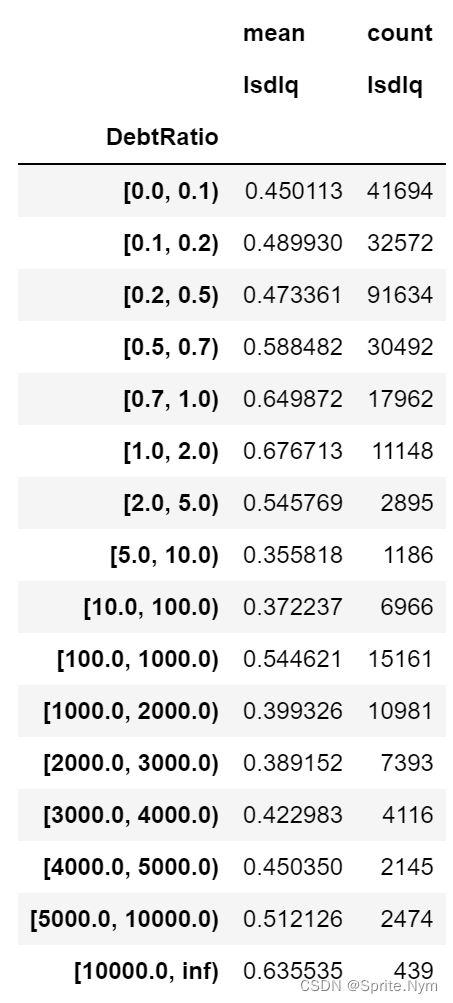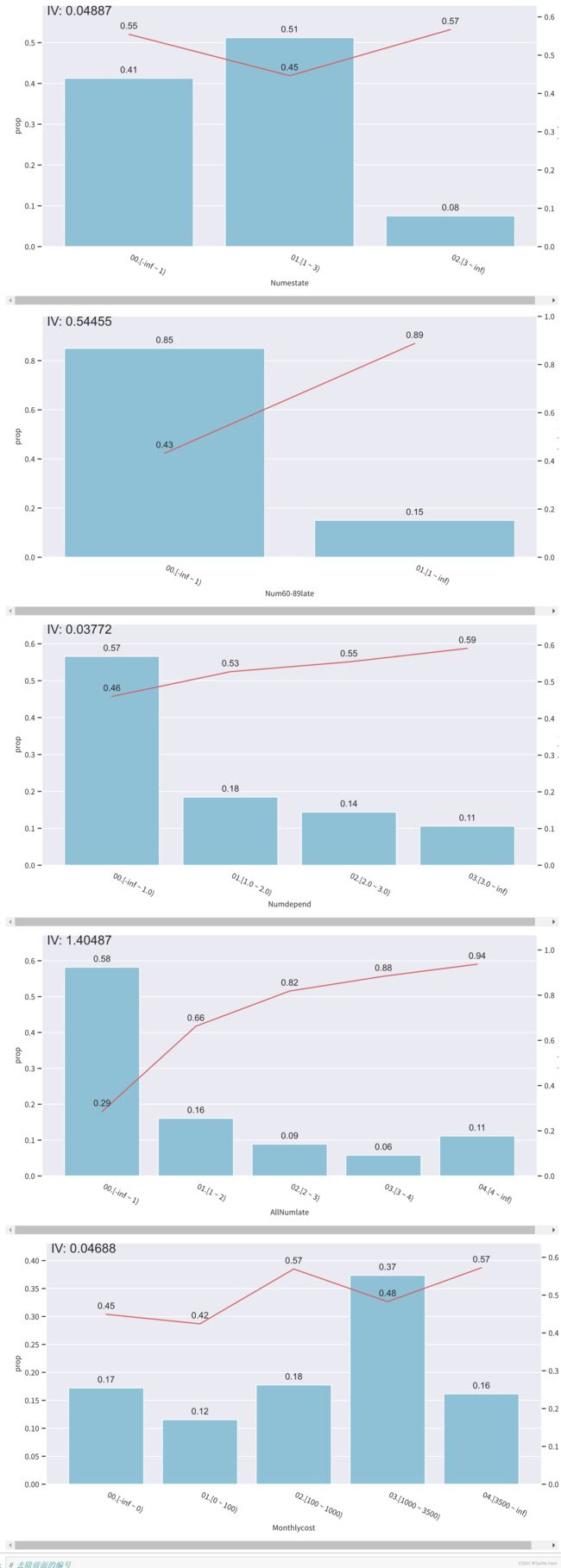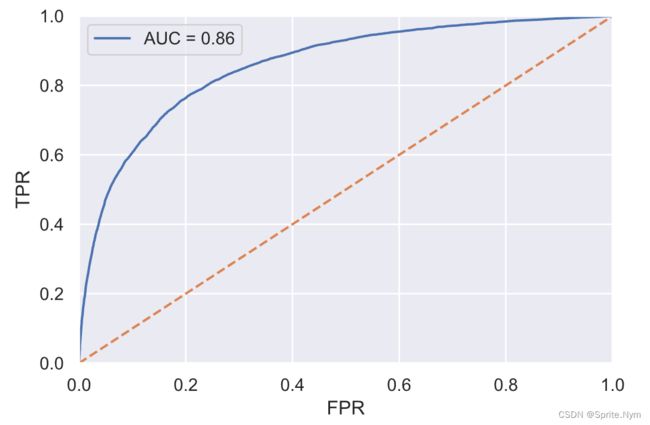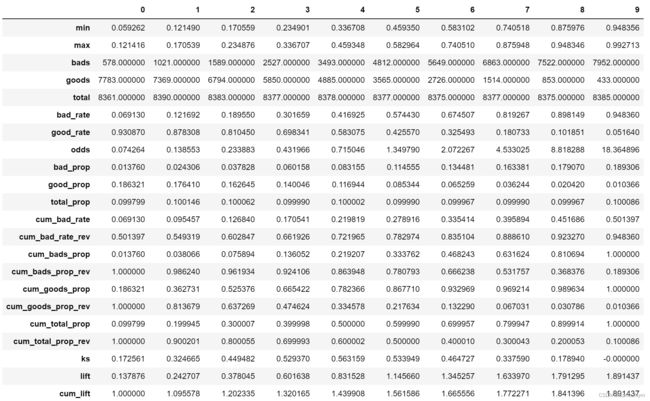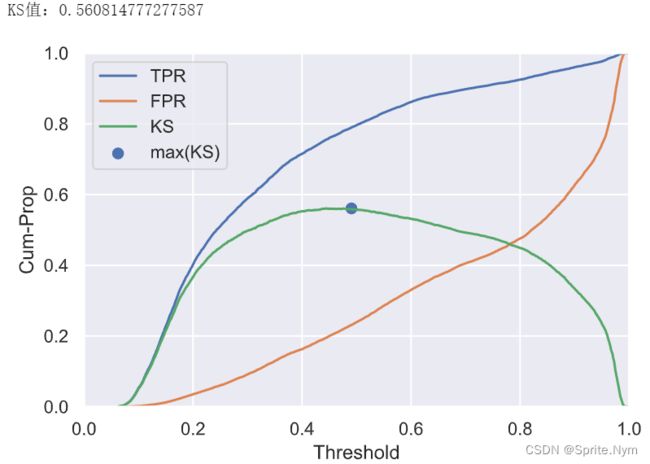【数据分析实战】金融评分卡建立
文章目录
- 一、导入数据
- 二、EDA
-
- 2.1 查看Revol特征
- 2.2 Age
- 2.3 DebtRatio
- 2.4 Numopen
- 2.5 Numestate
- 2.6 Numdepend
- 2.7 MonthlyIncome
- 2.8 Num30-59late Num60-89late Num90late
- 三、数据清洗
-
- 3.1 异常值
- 3.2 缺失值
- 3.3 进行过采样
- 四、特征预处理
-
- 4.1 连续值四舍五入
- 4.2 创建衍生变量
- 4.3 特征筛选
- 五、计算WOE值
-
- 5.1 特征分箱
- 5.2 WOE转化
- 5.3 逐步回归
- 六、建模和评估
- 七、评分卡建立
一、导入数据
import numpy as np
import pandas as pd
import matplotlib.pyplot as plt
%config InlineBackend.figure_format = 'svg'
import toad
from toad.plot import bin_plot, badrate_plot
import math
from imblearn.over_sampling import SMOTE, RandomOverSampler
import seaborn as sns
sns.set()
# 数据来源:kaggle项目"give me some credit"
credit_df0 = pd.read_csv('data/GiveMeSomeCredit/cs-training.csv')
# 查看数据集
credit_df0.head()
# 查看描述性统计信息
toad.detect(credit_df0)
- SeriousDlqin2yrs:超过90天或更糟的逾期拖欠
- RevolvingUtilizationOfUnsecuredLines:除了房贷车贷之外的信用卡账面金额(即贷款金额)/信用卡总额度
- age:贷款人年龄
- NumberOfTime30-59DaysPastDueNotWorse:35-59天逾期但不糟糕次数
- DebtRatio:负债比率
- MonthlyIncome:月收入
- NumberOfOpenCreditLinesAndLoans:开放式信贷和贷款数量,开放式贷款(分期付款如汽车贷款或抵押贷款)和信贷(如信用卡)的数量
- NumberOfTimes90DaysLate:借款者有90天或更高逾期的次数
- NumberRealEstateLoansOrLines:不动产贷款或额度数量
- NumberOfTime60-89DaysPastDueNotWorse:60-89天逾期但不糟糕次数
- NumberOfDependents:不包括本人在内的家属数量
二、EDA
# 丢弃编号列
credit_df1 = credit_df0.drop(['Unnamed: 0'], axis=1)
# 修改列名
colnames={'SeriousDlqin2yrs':'Isdlq',
'age':'Age',
'RevolvingUtilizationOfUnsecuredLines':'Revol',
'NumberOfTime30-59DaysPastDueNotWorse':'Num30-59late',
'NumberOfOpenCreditLinesAndLoans':'Numopen',
'NumberOfTimes90DaysLate':'Num90late',
'NumberRealEstateLoansOrLines':'Numestate',
'NumberOfTime60-89DaysPastDueNotWorse':'Num60-89late',
'NumberOfDependents':'Numdepend'}
credit_df1.rename(columns=colnames, inplace=True)
credit_df1.head()
# 查看好坏比
sns.countplot(credit_df1['Isdlq'])
print(f"好坏比:{np.round(100 * credit_df1['Isdlq'].mean(), 2)}%")
# 好坏比:6.68%
2.1 查看Revol特征
# 查看可用额度比的描述性统计信息
credit_df1['Revol'].describe([0.99, 0.999])
"""
count 150000.000000
mean 6.048438
std 249.755371
min 0.000000
50% 0.154181
99% 1.092956
99.9% 1571.006000
max 50708.000000
Name: Revol, dtype: float64
"""
明显分布异常
# 画出Revol小于1的分布图
sns.distplot(credit_df1[credit_df1['Revol']<1]['Revol'], bins=10)
# 定义一个分箱并统计箱内坏客户率的函数
def show_rate_by_box(df, target_name, feature_name, bins):
temp = pd.concat([df[target_name], pd.cut(df[feature_name], bins=bins, right=False)], axis=1)
return pd.pivot_table(temp, index=[feature_name], values=[target_name], aggfunc=['mean', 'count'])
按理说Revol不应该大于1,所以我们重点查看大于1的数据违约率如何
# 初步分箱并查看各区间段的违约率分布,给后续分箱提供参考
revol_bins=[0,0.5,1,1.5,2,5,10,20,30,40,50,100,1000,5000,math.inf]
temp = show_rate_by_box(credit_df1, 'Isdlq', 'Revol', bins=revol_bins)
show_rate_by_box(credit_df1, 'Isdlq', 'Revol', bins=revol_bins)
# 画成图方便观看
plt.figure(figsize=(15, 5))
sns.barplot(x=temp.index, y=temp[( 'mean', 'Isdlq')])
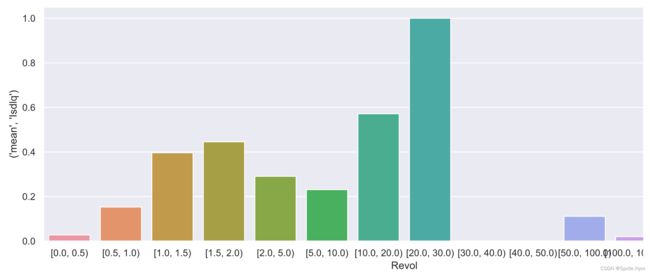
结论:1到20坏客户比率明显上升,20以上又降下来,将异常值阈值确定为20。高于20后续统一删除。
2.2 Age
# 查看年龄的描述性统计信息
credit_df1['Age'].describe([0.01])
"""
count 150000.000000
mean 52.295207
std 14.771866
min 0.000000
1% 24.000000
50% 52.000000
max 109.000000
Name: Age, dtype: float64
"""
年龄小于18岁不符合业务逻辑,后续准备统一排除
# 查看要删除的有几人
len(credit_df1[credit_df1['Age']<18])
# 1
# 画出分布图
sns.distplot(credit_df1['Age'])
2.3 DebtRatio
# 查看负债率的描述性统计信息
credit_df1['DebtRatio'].describe([0.01, 0.99, 0.999])
"""
count 150000.000000
mean 353.005076
std 2037.818523
min 0.000000
1% 0.000000
50% 0.366508
99% 4979.040000
99.9% 10613.074000
max 329664.000000
Name: DebtRatio, dtype: float64
"""
# 画图查看分布
sns.distplot(credit_df1[credit_df1['DebtRatio']<10000]['DebtRatio'])
# 初步分箱并查看各区间段的违约率分布,给后续分箱提供参考
debtratio_bins=[0,1,2,5,10,100,1000,2000,3000,4000,5000,10000,math.inf]
show_rate_by_box(credit_df1, 'Isdlq', 'DebtRatio', bins=debtratio_bins)
2.4 Numopen
# 查看开放式信贷和贷款数量的描述性统计信息
credit_df1['Numopen'].describe([0.99])
"""
count 150000.000000
mean 8.452760
std 5.145951
min 0.000000
50% 8.000000
99% 24.000000
max 58.000000
Name: Numopen, dtype: float64
"""
# 查看点分布
plt.figure(figsize=(15, 6))
sns.countplot(credit_df1['Numopen'])
2.5 Numestate
# 查看房产和信用卡额度的数量
credit_df1['Numestate'].describe([0.99, 0.999])
"""
count 150000.000000
mean 1.018240
std 1.129771
min 0.000000
50% 1.000000
99% 4.000000
99.9% 9.000000
max 54.000000
Name: Numestate, dtype: float64
"""
# 查看数据点分布
sns.countplot(credit_df1['Numestate'])
# 箱线图查看数据分布
sns.boxplot(credit_df1['Numestate'])
2.6 Numdepend
# 查看家属数量的描述性统计信息
credit_df1['Numdepend'].describe([0.99, 0.999])
"""
count 146076.000000
mean 0.757222
std 1.115086
min 0.000000
50% 0.000000
99% 4.000000
99.9% 6.000000
max 20.000000
Name: Numdepend, dtype: float64
"""
# 画图查看分布
sns.countplot(credit_df1['Numdepend'])
# 查看缺失值
credit_df1[credit_df1['Numdepend'].isnull()]
# 确认是否这3924个样本月收入全部缺失
credit_df1[credit_df1['Numdepend'].isnull()]['MonthlyIncome'].isnull().sum()
# 3924
决定使用月收入缺失,但家属人数未缺失的样本的众数来填充家属人数的缺失值
# 查看众数
credit_df1[(credit_df1['MonthlyIncome'].isnull())&(credit_df1['Numdepend'].notnull())]['Numdepend'].mode()
# 0
2.7 MonthlyIncome
# 查看描述性统计信息
credit_df1['MonthlyIncome'].describe([0.99, 0.999])
"""
count 1.202690e+05
mean 6.670221e+03
std 1.438467e+04
min 0.000000e+00
50% 5.400000e+03
99% 2.500000e+04
99.9% 7.839575e+04
max 3.008750e+06
Name: MonthlyIncome, dtype: float64
"""
# 画图查看分布
sns.kdeplot(credit_df1['MonthlyIncome'])
# 继续用箱线图查看
sns.boxplot(credit_df1['MonthlyIncome'])
缺失值一开始用detect查看时缺失值是19.8%,后期用随机森林填补。
2.8 Num30-59late Num60-89late Num90late
# 查看数据点图
col_list = ['Num30-59late', 'Num60-89late', 'Num90late']
plt.figure(figsize=(15, 4))
for i in range(3):
plt.subplot(1, 3, i+1)
sns.countplot(credit_df1[col_list[i]])
# 查看箱线图
col_list = ['Num30-59late', 'Num60-89late', 'Num90late']
plt.figure(figsize=(12, 4))
for i in range(3):
plt.subplot(1, 3, i+1)
sns.boxplot(credit_df1[col_list[i]])
可以看出96、98明显是异常值,后期删除。
三、数据清洗
3.1 异常值
# Revol
# 删除之前提到的大于20的数据
credit_df1 = credit_df1[credit_df1['Revol']<=20]
# 查看描述性统计信息,现在最高值为18
credit_df1['Revol'].describe()
"""
count 149766.000000
mean 0.323388
std 0.378382
min 0.000000
25% 0.029788
50% 0.153560
75% 0.555997
max 18.000000
Name: Revol, dtype: float64
"""
# Age
# 删除18岁以下数据
credit_df1 = credit_df1[credit_df1['Age']>=18]
# Num30-59late Num60-89late Num90late
# 去除96、98两种异常值
col_list = ['Num30-59late', 'Num60-89late', 'Num90late']
for col in col_list:
credit_df1 = credit_df1[credit_df1[col]<90]
# Numestate
# 删除50以上数据
credit_df1 = credit_df1[credit_df1['Numestate']<50]
3.2 缺失值
# Numdepend
credit_df1['Numdepend'].fillna(0, inplace=True)
# MonthlyIncome缺失值填充
from sklearn.ensemble import RandomForestRegressor
from sklearn.model_selection import train_test_split
# 先得到训练集特征、标签和测试集
features_df = credit_df1[credit_df1['MonthlyIncome'].notnull()].drop(columns=['Isdlq', 'MonthlyIncome'])
target = credit_df1[credit_df1['MonthlyIncome'].notnull()]['MonthlyIncome']
test_df = credit_df1[credit_df1['MonthlyIncome'].isnull()].drop(columns=['Isdlq', 'MonthlyIncome'])
# 先看看效果
X_train, X_test, y_train, y_test = train_test_split(features_df, target, test_size=0.3)
RandomForestRegressor(max_depth=10, n_estimators=100).fit(X_train, y_train).score(X_test, y_test)
temp = pd.Series(data=RandomForestRegressor(max_depth=10, n_estimators=100).fit(features_df, target).predict(test_df), index=test_df.index, name='MonthlyIncome')
credit_df1['MonthlyIncome'] = pd.concat([target, temp])
credit_df1.describe()
这里我的MonthlyIncome用随机森林做回归效果很差,不仅R²值非常不稳定,甚至会出现负数,所以直接不处理了,但是为了便于后续的四舍五入,先把空值填充为-10。
credit_df1['MonthlyIncome'].fillna(-10, inplace=True)
3.3 进行过采样
# 写一个过采样函数
def over_sampled(df, target, model):
X = df.drop(columns=[target])
y = df[target]
X_oversampled, y_oversampled = model.fit_resample(X,y)
return pd.concat([X_oversampled, y_oversampled], axis=1)
# 使用RandomOverSampler过采样
credit_df1 = over_sampled(credit_df1, 'Isdlq', RandomOverSampler())
这里不过采样、SMOTE过采样和RandomOverSampler过采样我都试了,最后效果差别不大。
四、特征预处理
4.1 连续值四舍五入
某些连续值直接交给toad分箱运行时间太久,所以先进行四舍五入处理。
(1)Revol
# 再次调用之前的透视表函数查看每个箱内坏客户率
revol_bins=[0,0.1,0.2,0.3,0.4,0.5,0.6,0.7,0.8,0.9,1,1.5,2,5,10,20]
temp = show_rate_by_box(credit_df1, 'Isdlq', 'Revol', bins=revol_bins)
show_rate_by_box(credit_df1, 'Isdlq', 'Revol', bins=revol_bins)
Revol在1以下坏客户率有明显单调性,Revol在1以上坏客户率普遍挺高的,没有太大区分度,因此小于1的统一保留1位小数,大于1的统一保留0位小数,后续再交给toad分箱
credit_df1['Revol'] = credit_df1['Revol'].map(lambda x: np.round(x, 1) if x < 1 else np.round(x, 0))
(2)DebtRatio
debtratio_bins=[0,0.1,0.2,0.5,0.7,1,2,5,10,100,1000,2000,3000,4000,5000,10000,math.inf]
show_rate_by_box(credit_df1, 'Isdlq', 'DebtRatio', bins=debtratio_bins)
跨度太大,不是很好处理,决定同样进行四舍五入,但规则更复杂
credit_df1['DebtRatio'] = credit_df1['DebtRatio'].map(
lambda x: np.round(x, 1) if x < 1 else np.round(x, 1-(len(str(int(np.round(x, 0))))))
)
(3)MonthlyIncome
credit_df1['MonthlyIncome'] = credit_df1['MonthlyIncome'].map(
lambda x: np.round(x, -1) if x < 100 else
np.round(x, -2) if x < 1000 else np.round(x, 1-(len(str(int(np.round(x, 0))))))
)
(4)Numdepend
之前用SMOTE时出现了浮点数,处理一下
credit_df1['Numdepend'] = credit_df1['Numdepend'].map(lambda x: np.round(x, 0))
4.2 创建衍生变量
credit_df1['AllNumlate'] = credit_df1['Num30-59late'] + credit_df1['Num60-89late'] + credit_df1['Num90late']
credit_df1['Monthlycost'] = (credit_df1['MonthlyIncome'] * credit_df1['DebtRatio']).map(lambda x: -10 if x < 0 else x)
credit_df1.head()
4.3 特征筛选
# 查看iv值
toad.quality(credit_df1,'Isdlq', iv_only=True)
# 特征选择,iv值低于0.03丢弃,相关性高于0.8的两个特征丢弃低iv值特征
credit_df2, dropped = toad.selection.select(credit_df1, target='Isdlq', iv=0.03, corr=0.8, return_drop=True)
# 查看被丢弃特征
dropped
"""
{'empty': array([], dtype=float64),
'iv': array([], dtype=object),
'corr': array([], dtype=object)}
"""
没有被筛掉的,说明都还可以吧,特征数也不是很多,就都留下了。
五、计算WOE值
5.1 特征分箱
def show_toad_box(df, col_list, target, rules):
combiner = toad.transform.Combiner()
combiner.fit(df[col_list+[target]], y=target, method='chi', min_samples=0.05)
combiner.set_rules(rules)
return combiner
col_list = ['Revol', 'Age', 'DebtRatio', 'MonthlyIncome', 'Numopen', 'Num30-59late',
'Num90late', 'Numestate', 'Num60-89late', 'Numdepend', 'AllNumlate',
'Monthlycost']
rules = {
'MonthlyIncome':[0,2000,4000,5000,7000,10000],
'Monthlycost':[0,100,1000,3500]
# 'Numopen':[2,4],
# 'Num60-89late':[1],
# 'Revol':[0.2,0.4,0.6,0.8,1],
# 'DebtRatio':[0.6,0.8,3],
}
combiner = show_toad_box(credit_df2, col_list, 'Isdlq', rules=rules)
credit_df3 = combiner.transform(credit_df2, labels=True)
# 出图观察
for col in col_list:
bin_plot(credit_df3, x=col, target='Isdlq')
# 去除前面的编号
temp1 = credit_df3['Isdlq']
temp2 = credit_df3.drop(columns=['Isdlq'])
credit_df3 = pd.concat([temp1, temp2], axis=1)
credit_df3.iloc[:, 1:] = credit_df3.iloc[:, 1:].applymap(lambda x: x[3:])
5.2 WOE转化
# 实例化对象并转化
transfer = toad.transform.WOETransformer()
woe = transfer.fit_transform(credit_df3, credit_df3['Isdlq'], exclude=['Isdlq'])
# 查看WOE值
woe.head()
5.3 逐步回归
# 使用逐步回归筛选掉一些特征
credit_df4, dropped = toad.selection.stepwise(woe, target='Isdlq', estimator='ols', direction='both', criterion='aic', return_drop=True)
# 查看被丢弃的特征
dropped
# []
还是没有被筛选掉的特征。
六、建模和评估
from sklearn.linear_model import LogisticRegression
from sklearn.model_selection import train_test_split, GridSearchCV
from sklearn.metrics import roc_curve, roc_auc_score
# 网格搜索
params = {
'penalty':['l1', 'l2'],
'C':[0.1, 0.2, 0.3, 0.4, 0.5],
'max_iter':[50, 70, 100, 150, 200],
'solver':['newton-cg', 'lbfgs', 'liblinear', 'sag', 'saga']
}
gscv = GridSearchCV(estimator=LogisticRegression(), param_grid=params)
gscv.fit(credit_df4.drop(columns=['Isdlq']), credit_df4['Isdlq'])
# 得到最优参数
gscv.best_params_
# 划分训练集和测试集
X = credit_df4.drop(columns=['Isdlq'])
y = credit_df4['Isdlq']
X_train, X_test, y_train, y_test = train_test_split(X, y, test_size=0.3)
# 使用刚才得到的最优参数重新建模训练
lr = LogisticRegression(
solver='liblinear',
penalty='l1',
C=0.1,
max_iter=100
)
lr.fit(X_train, y_train)
lr_proba = lr.predict_proba(X_test)[:,1]
# 评估
fpr, tpr, threshold = roc_curve(y_test, lr_proba)
auc = roc_auc_score(y_test, lr_proba)
plt.plot(fpr, tpr, label=f'AUC = {auc:.2f}')
plt.plot([0,1],[0,1],'--')
plt.axis([0,1,0,1])
plt.xlabel('FPR')
plt.ylabel('TPR')
plt.legend()
# 查看模型报告
bucket = toad.metrics.KS_bucket(lr_proba, y_test, bucket=10, method='quantile')
bucket.T
# 计算KS值并绘制曲线
threshold1 = pd.Series(threshold).sort_values(ascending=True)
tpr1 = pd.Series(tpr).sort_values(ascending=True)
fpr1 = pd.Series(fpr).sort_values(ascending=True)
ks = tpr1-fpr1
print(f'KS值:{ks.max()}')
plt.plot(threshold1, tpr1, label='TPR')
plt.plot(threshold1, fpr1, label='FPR')
plt.plot(threshold1, ks, label='KS')
plt.scatter(threshold1[ks[ks==ks.max()].index], ks.max(), label='max(KS)', s=40)
plt.xlabel('Threshold')
plt.ylabel('Cum-Prop')
plt.axis([0,1,0,1])
plt.legend()
plt.show()
七、评分卡建立
# 实例化card对象
card = toad.ScoreCard(
# 使用之前的combiner
combiner = combiner,
# 使用之前的transfomer
transer = transfer,
# 使用之前的逻辑斯蒂回归参数
solver='liblinear',
penalty='l1',
C=0.1,
max_iter=100,
# 基准分
base_score=800,
# 基准好坏客户比
base_odds=20,
# 倍率(好坏客户比每翻rate倍,扣pdo分)
rate=2,
# 扣分
pdo=50
)
# 训练
card.fit(credit_df4.drop(columns=['Isdlq']), credit_df4['Isdlq'])
# 查看评分卡
pd.set_option('display.max_rows', None)
card.export(to_frame=True)
# 查看分数分布
pd.Series(card.predict(credit_df4)).describe()
"""
count 279258.000000
mean 585.138884
std 106.412042
min 320.131615
25% 529.078751
50% 619.335745
75% 678.356577
max 681.166471
dtype: float64
"""

